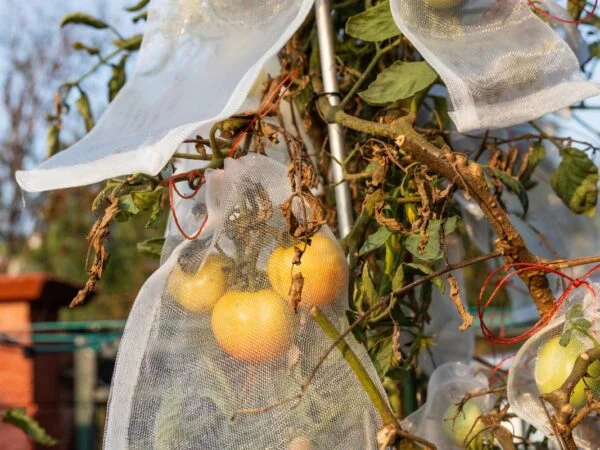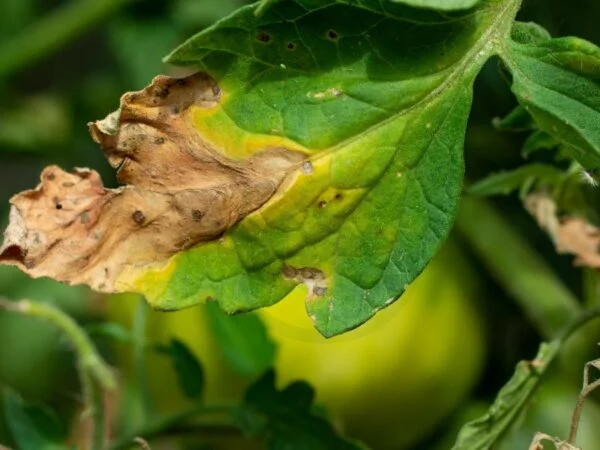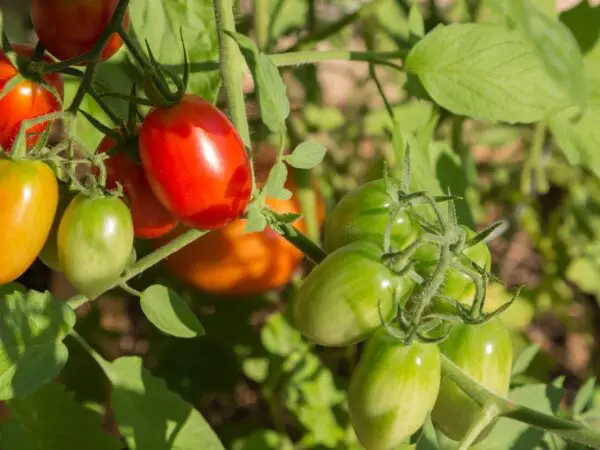Planting tomatoes in North Texas can be a bit tricky for gardeners, but with the right timing and local knowledge, you can yield a bountiful harvest. Understanding the planting time is crucial for gardeners for successful tomato cultivation in this state. The history of tomato cultivation in North Texas provides valuable insights into the best practices for planting. By delving into the historical context of days, we can uncover tried-and-true methods that have stood the test of time.
Understanding Tomato Planting in North Texas
North Texas experiences hot summers and mild winters, which significantly impact tomato growth./// High temperatures can stress the plants, affecting their ability to set fruit on hot days. Extreme weather conditions such as hailstorms or strong winds can damage young tomato plants.
To ensure successful tomato growth in North Texas, it's crucial to choose tomato varieties that are well-suited for the region's climate. Look for heat-tolerant varieties like Solar Fire, Phoenix, or Tycoon that can thrive in high temperatures without compromising fruit production. ///
When planting tomatoes in North Texas, consider starting seeds indoors before transplanting them outdoors once the risk of frost has passed. /// This allows the young plants to establish themselves before facing potentially harsh outdoor conditions.
In North Texas, well-draining soil is essential for healthy tomato plants. Sandy loam or loamy soils with good drainage properties are ideal for promoting root development and preventing waterlogging.
Before planting tomatoes, test your soil's pH levels using a simple home testing kit available at garden centers. Tomatoes prefer slightly acidic soil with a pH range between 6.0 and 6.8; therefore, amend the soil if necessary to achieve these optimal pH levels.
Incorporating organic matter into the soil helps improve its structure and fertility while providing essential nutrients for robust plant growth. Consider adding compost or well-rotted manure to enhance soil quality and support vigorous tomato growth throughout the growing season.
Tomatoes require ample sunlight to thrive and produce an abundant harvest in North Texas. Aim for a minimum of six hours of direct sunlight daily when selecting a location for planting your tomato garden.
Position your tomato plants where they will receive maximum sun exposure during peak daylight hours while also considering potential shade from nearby structures or trees that could affect their sunlight intake.
Using reflective mulch around your tomato plants can help optimize sunlight absorption by redirecting light towards the lower leaves of the plant—an effective strategy particularly useful in areas with limited direct sun exposure due to shading issues.
Balancing moisture levels is crucial when caring for tomatoes in North Texas' climate—avoid both overwatering and underwatering as they can lead to various issues such as blossom end rot or fungal diseases.
Implement proper irrigation techniques suited for North Texas' climate by utilizing drip irrigation systems or soaker hoses instead of overhead watering methods that may promote foliage diseases under humid conditions.
Ideal Planting Time for Tomatoes
The planting time for tomatoes in North Texas during spring is crucial. It's essential to consider the last expected frost date and temperature trends before planting. In North Texas, the ideal time to plant tomatoes in spring is after the last frost, which typically occurs around mid-March to early April.
To maximize the growing season for spring crops, it's best to start tomato seeds indoors 6-8 weeks before the anticipated transplanting date. This allows them to develop into sturdy seedlings ready for outdoor planting when the soil and air temperatures are consistently warm.
When considering spring planting, keep an eye on temperature trends as well. Tomatoes thrive when daytime temperatures range between 70°F and 85°F, with nighttime temperatures above 55°F. If you notice consistent warmth in these ranges after the last frost date, it's a good indication that it's time to plant your tomatoes outdoors.
Selecting Tomato Varieties
Heat-Tolerant Types
When to plant tomatoes in North Texas depends on selecting heat-tolerant varieties. These types can withstand the high temperatures common in the region. Understanding heat stress on tomato plants is crucial for choosing the right variety. Heat-tolerant tomatoes exhibit resilient traits, such as being able to thrive and produce fruit despite intense heat.
For example, "Heatmaster," "Solar Fire," and "Phoenix" are popular tomato varieties known for their ability to endure hot climates like that of North Texas. These types have been specifically bred to tolerate high temperatures and still yield a good harvest.
Determinate vs Indeterminate
It's essential to consider the growth habits of determinate and indeterminate tomatoes when deciding when to plant them in North Texas. Determinate tomatoes have a more compact growth habit with a predetermined height, making them suitable for smaller spaces or containers. On the other hand, indeterminate tomatoes continue growing and producing fruit throughout the season until they are affected by frost.
In terms of suitability for North Texas climate, both determinate and indeterminate varieties can thrive given proper care and maintenance. However, determinate types might be more favorable due to their controlled growth pattern in limited spaces or urban gardens.Indeterminate tomatoes offer an extended harvest period since they continuously produce fruit until cold weather sets in.
Planting Techniques for Success
Seed Starting Indoors
Starting tomato seeds indoors offers several advantages. It allows you to control the growing conditions, ensures a head start before outdoor planting, and protects the delicate seedlings from harsh weather. In North Texas, it's recommended to start tomato seeds indoors 6-8 weeks before the last spring frost date. This usually falls around mid-February to early March.
To provide optimal conditions for seed germination, use a sterile seed-starting mix in containers with drainage holes. Keep the soil consistently moist but not waterlogged and maintain a temperature between 70-80°F. Once the seeds sprout, ensure they receive plenty of light to prevent them from becoming leggy or weak.
Transplanting Seedlings
When transitioning seedlings from indoor to outdoor environments, it's crucial to acclimate them gradually to prevent transplant shock. This process is known as hardening off and involves exposing the seedlings to outdoor conditions like sunlight and wind for increasing durations over 7-10 days.
To avoid transplant shock during this process, place the seedlings in a sheltered spot initially and gradually expose them to direct sunlight and gentle breezes. Water the transplants thoroughly after planting but be careful not to overwater as this can lead to root rot.
Spacing and Depth
Proper spacing guidelines are essential for healthy tomato plants. When planting tomatoes in North Texas gardens, space determinate varieties about 2-3 feet apart while indeterminate types should be spaced 3-4 feet apart. This ensures adequate air circulation between plants which helps reduce disease risk.
Achieving ideal depth when planting tomatoes is equally important. Bury your young tomato plants deep into the soil so that only their top leaves are above ground level; this encourages strong root development which leads to healthier plants overall.
Nurturing Tomatoes Through the Season
Understanding the nutritional needs of tomato plants
Tomatoes require essential nutrients to grow healthy and produce abundant fruits. They need a balanced supply of nitrogen, phosphorus, and potassium. Nitrogen supports foliage growth, phosphorus aids in root development, and potassium contributes to fruit production. Understanding these nutritional needs is crucial for determining the right fertilization schedule.
Implementing a balanced fertilization schedule
For tomatoes in North Texas, it's best to start with a soil test to assess its nutrient levels. Based on the results, you can then create a fertilization plan that meets your plant's specific requirements. A balanced fertilizer with an N-P-K (nitrogen-phosphorus-potassium) ratio of 10-10-10 or 8-24-24 is generally suitable for tomatoes during different growth stages.
Organic and synthetic fertilizer options
Organic options like compost, fish emulsion, or bone meal are great choices for providing slow-release nutrients to tomato plants. On the other hand, synthetic fertilizers offer precise control over nutrient ratios but may require careful application to prevent over-fertilization.
Protecting Tomatoes from Extreme Heat
Shade Solutions
Protecting tomatoes from extreme heat in North Texas is essential for ensuring a successful growing season. Creating shade solutions can help shield the plants from intense sun exposure, reducing the risk of heat stress. Using shade cloth is an effective method to provide protection by blocking direct sunlight and lowering the temperature around the tomato plants. Another approach involves utilizing natural shading methods, such as planting taller crops like corn or sunflowers on the southern side of the tomato patch to cast shadows over the plants during peak sunlight hours. By implementing these strategies, you can effectively minimize heat stress and prevent sunscald on your tomatoes.
Mulching Benefits One of the key practices for protecting tomatoes from extreme heat is reaping the benefits of mulching. Mulching around tomato plants offers several advantages, including conserving soil moisture, regulating soil temperature, and suppressing weed growth. When choosing suitable mulch materials for your North Texas garden, opt for organic options like straw or wood chips that can insulate the soil while allowing sufficient air circulation. Maintaining proper mulch depth around tomato plants is crucial; a layer of approximately 2-3 inches will aid in retaining moisture and preventing rapid evaporation during hot weather.
Watering Practices for Optimal Growth
Irrigation Methods
When to plant tomatoes in North Texas is crucial, but irrigation methods also play a significant role in ensuring optimal growth. In this region, where the weather can be hot and dry, it's essential to explore different irrigation methods for tomatoes. For instance, drip irrigation is a highly efficient method that delivers water directly to the roots of the plants, minimizing evaporation and water waste. On the other hand, overhead watering systems can lead to moisture-related diseases if not managed carefully.
Drip irrigation involves using hoses or tubing with small holes that allow water to slowly drip onto the soil around each plant. This method ensures that water reaches deep into the soil without wetting the foliage excessively. Conversely, overhead watering systems involve sprinklers or other devices that distribute water over a larger area from above. While this may seem convenient, it can increase humidity levels around the plants' leaves and stems, potentially leading to fungal issues.
Frequency and Timing
Determining optimal watering frequency is another critical aspect of growing tomatoes in North Texas. The frequency of watering largely depends on factors such as temperature, humidity levels, and rainfall patterns. During periods of extreme heat or drought conditions common in North Texas summers, more frequent watering might be necessary to keep tomato plants healthy.
Moreover,** considering time of day for watering** is important when cultivating tomatoes in this region. It's generally best to water early in the morning so that any excess moisture on leaves has a chance to evaporate during daylight hours rather than lingering overnight when temperatures drop.
Adjusting your watering schedule based on weather conditions, including rain forecasts and temperature fluctuations,is vital for successful tomato cultivation in North Texas.Water requirements will change depending on whether there has been substantial rainfall or if an unexpected heatwave occurs.
Harvesting and Storage Tips
Picking Peak Ripeness
When to plant tomatoes in North Texas directly impacts when you can harvest them. Peak ripeness is crucial for the best flavor, so look for vibrant color and firmness. A ripe tomato should yield slightly to gentle pressure without being too soft.
Factors like weather and temperature affect ripening, so keep an eye on your tomatoes. Harvest when they reach full color, even if slightly firm; they will continue to ripen off the vine. To avoid picking unripe fruit, check every few days once they start changing color.
Tips for harvesting at the right time include gently twisting the tomato until it breaks free from the stem. Be careful not to damage other fruits or stems nearby while doing this.
Post-Harvest Care
After harvesting, proper handling and storage are essential for maintaining quality. Handling tomatoes with care prevents bruising or damaging their delicate skin, which can lead to spoilage.
For post-harvest care, store ripe tomatoes at room temperature away from direct sunlight. Refrigeration can diminish their flavor and texture but is suitable for slowing down further ripening if needed.
Maximizing shelf life involves avoiding storing tomatoes near fruits that produce ethylene gas as it accelerates ripening and decay of other produce around it.
Utilizing harvested green tomatoes allows you to make use of unripened fruit before frost hits in fall by making fried green tomatoes or chutneys.
Saving Seeds for Future Planting
Seed Selection
When to plant tomatoes in North Texas greatly depends on the seed selection. Select tomato seeds based on your preferences and the local climate. Consider disease-resistant varieties, especially if you've had issues with diseases like blight or wilt in previous seasons. Look into heirloom vs hybrid options to determine which suits your needs best.
Choosing disease-resistant varieties is crucial for successful tomato cultivation in North Texas. Opt for seeds that offer resistance to common regional diseases such as bacterial spot and fusarium wilt. On the other hand, heirloom tomatoes are open-pollinated, meaning their seeds can be saved and planted year after year, while hybrids are a cross between two different varieties resulting in specific desirable traits.
Storage Techniques
Effective storage techniques play a vital role when deciding when to plant tomatoes in North Texas. After harvesting, it's essential to store tomatoes properly to ensure they remain viable for future planting seasons. Utilize refrigeration and canning techniques to extend the longevity of harvested tomatoes.
Refrigeration is an excellent short-term solution for storing freshly harvested tomato seeds before planting them next season. Ensure that the seeds are completely dry before placing them in an airtight container within the refrigerator's vegetable crisper drawer. Consider utilizing canning techniques such as making homemade tomato sauce or salsa and preserving it through proper canning methods.
Essential Tips for Juicy and Delicious Tomatoes
Consistency is key. Establishing a regular maintenance routine ensures that your plants receive the attention they need throughout the growing season. By consistently monitoring their health, you can address any issues promptly and help them thrive.
Regularly check for signs of pests or diseases on your tomato plants. Look out for common problems like aphids, hornworms, or blight. Addressing these issues early on can prevent them from spreading and causing significant damage to your plants.
Maintaining a consistent watering schedule is crucial for tomato plants. They require even moisture levels to develop properly and avoid issues such as blossom end rot. Water deeply but infrequently to encourage strong root growth and prevent waterlogging.
Conclusion
You've now got the lowdown on planting and nurturing tomatoes in North Texas. Remember, timing is crucial, so get those plants in the ground after the last frost date. Choose the right varieties, pamper them with proper care, shield them from scorching heat, and keep them hydrated for a bountiful harvest. Now, go out there and show those tomatoes some love!
Remember, it's not just about growing tomatoes; it's about savoring the fruits of your labor. So, roll up your sleeves, dig in the dirt, and get ready to enjoy the juiciest, most flavorful tomatoes you've ever tasted. Happy gardening!
Frequently Asked Questions
When is the best time to plant tomatoes in North Texas?
The ideal time to plant tomatoes in North Texas is from late March to early April. This timing allows the plants to establish before the intense heat of summer sets in, ensuring better growth and yield.
What are some effective watering practices for tomato plants in North Texas?
In North Texas, it's crucial to water tomato plants deeply but less frequently. Aim for around 1-2 inches of water per week, either through rainfall or irrigation. Watering at the base of the plants in the morning helps prevent diseases and promotes strong root development.
How can I protect my tomato plants from extreme heat in North Texas?
To protect your tomato plants from extreme heat, consider providing shade during peak sun hours using shade cloth or planting taller crops nearby that can offer natural shading. Mulching around the base of the plants helps retain moisture and regulate soil temperature.
What are some essential tips for growing juicy and delicious tomatoes in North Texas?
Selecting suitable varieties for your region, providing consistent moisture without overwatering, and fertilizing appropriately with balanced nutrients are key factors. Also, regular pruning and proper support for vines contribute to healthier fruit production.
Is it possible to save seeds from my tomatoes for future planting?
Yes! Saving seeds from your homegrown tomatoes is not only possible but also a rewarding practice. Simply choose ripe fruits from healthy, non-hybrid varieties, extract and dry the seeds thoroughly before storing them properly for future use.
Image Source: Paid image from CANVA




